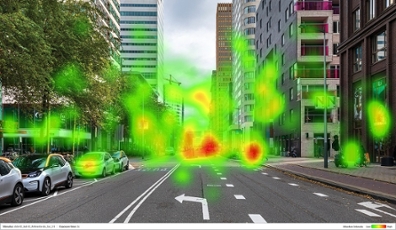‘Neuroarchitecture is promising for the future’
Emerging technology measures perception of urban areas
10 Jan 2024 12:50 | Centre for Applied Research TechnologyIn many cities, building up is the only way to meet massive demand. But how can we ensure all of this dense vertical development does not sacrifice urban quality of life? In their book Neuroarchitecture, Frank Suurenbroek and Gideon Spanjar show how new technologies can be harnessed to create appealing spaces. ‘We make these places for humans, so let's also scale them to humans.’
The book is the fruit of Sensing Streetscapes, a two-year-long research project carried out by Amsterdam University of Applied Sciences with a large number of professional partners. The research team, led by Professor of Spatial Urban Transformation Frank Suurenbroek and Gideon Spanjar, a senior researcher, analysed design solutions in different settings. They looked at how particular design choices, meant to proportion high-rise buildings to a human scale, impact the user experience. These design choices include ‘recessing’ tall buildings, or the use of wide balconies, projecting façades and 'warmer' materials.
Designing for perception
By demonstrating the measurable human impact of specific design choices, Suurenbroek and Spanjar's book gives designers a set of practical tools to work with. The idea is that, if they can see exactly what users see, they can better adapt their design plans. Also, thanks to the new discipline of neuroarchitecture, they can now do that even before a building is built.
According to Suurenbroek, this could be a real game changer in how we build cities. ‘If you design a mobile phone, you can test a prototype with a group of users first and then tweak it based on their experiences. But, until recently, you couldn't do that with residential buildings, as you couldn't measure people's experiences until after the building went up. Now, with neuroarchitecture, you can.’
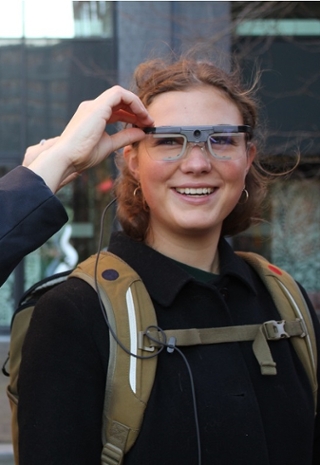
From neuroscience to neuroarchitecture
But what is neuroarchitecture, exactly? ‘In recent decades, we have become increasingly aware of how people operate in their environment’, Suurenbroek explains. ‘For example, we know that when we are outside we're constantly scanning our surroundings and that this governs our behaviour, without our being consciously aware of it. Neuroscience and psychology use technologies, theories and methods to measure that brain and body response to the environment. With neuroarchitecture, we’re leveraging this technology and knowledge to make it applicable for architecture and urban planning.’
For the first time ever, this is now making it possible to understand how design choices in the built environment influence human experience, perception and behaviour. Suurenbroek and Spanjar used eye-tracking technology to this end. In the lab, they presented subjects with images of densely built streets with different design solutions for building façades and street spaces. Small eye-tracking cameras then registered subjects’ eye movements at a rate of 30 times a second, generating a precise map of their scanning behaviour. The researchers then analysed the first few seconds of the recordings to see where subjects’ attention was drawn.
‘This let us tap into people's perceptions through their senses', says Spanjar. ‘You can gain a much more accurate picture of how people respond to their environment than when you ask them to rate places using questionnaires. What people report often differs from their actual experience because other things are unconsciously at play.’
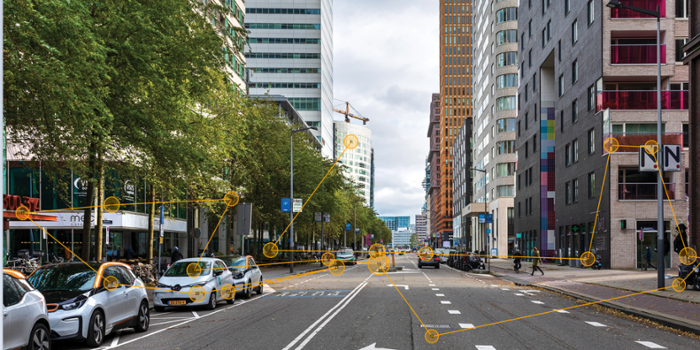
From Vancouver to Oslo
In their book, the two researchers show how neuroarchitecture can be applied in the real world by zooming in on 12 streets in 6 cities: Vancouver, Toronto, Manchester, London, Oslo and Amsterdam. Suurenbroek: ‘The first five cities have had high-rise cultures going back much longer. We wanted to know; how do these places think about human scaling and quality of life? We analysed the design solutions applied in these locales and then used neuroarchitecture to visualise people's perceptions. From that, we extrapolated lessons that we can now apply in the Netherlands, or anywhere else.’
Cases discussed in the book reveal that particular design solutions seem to influence people's scanning behaviour. As an example, Spanjar cites George Gershwinlaan in Amsterdam. ‘You can see how the designers sought to create the feel of a residential street by using finely scaled materials. Medium-height hedges have been planted around the buildings, and the pavement is cobbled. The buildings also have stepped façades that rise vertically only after a few floors, making them appear less tall. On nearby Gustav Mahlerlaan, a busy thoroughfare lined with end-to-end office blocks, there's been a clear attempt to break up the steep walls along the street with very high, wide entryways. That provides an anchor; you can see that because it's the first thing people look at.’
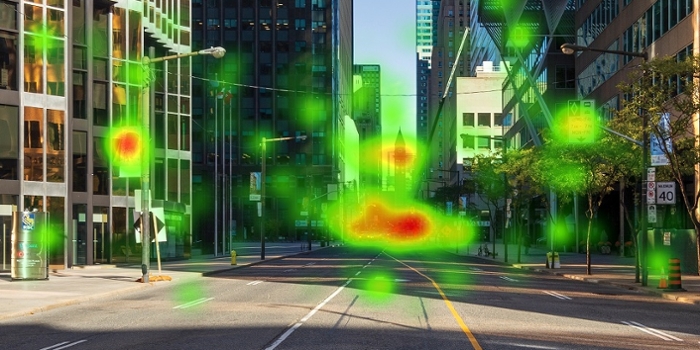
Conversation
Suurenbroek says they also encountered some less successful cases. ‘Some of the buildings in Toronto project an unbelievably brutal vibe onto the street. That's part and parcel of the period when they were built, in the 1970s, which really celebrated colossal structures. It disregards people on the street. What you get is a place that pedestrians have long just wanted to get in and out of quickly, instead of lingering.'
On the other hand, Suurenbroek points out, you don't want to make streets too fussy and small. ‘You can find successful and less successful measures in any city. The pictures in our book help to visualise that and have conversations about it.’
For example, about designing at eye level. Until now, it was thought that only things at eye level mattered for pedestrians moving along a street. But Suurenbroek and Spanjar's neuroarchitectural tests show this is not the case: high-rises also impact our experience at eye level. They say this experience can be manipulated by applying targeted solutions in a design, and by rethinking the relationship between the ground level and tall buildings.
New challenges, new technology
‘Neuroarchitecture is promising for the future’, Spanjar concludes. ‘It shows how we can get a better handle on the way people experience their environment and ways that the architecture of buildings can guide people to get around. This in turn opens up possibilities for housing development in congested areas.’ Apart from housing, Suurenbroek thinks the new technology can solve other challenges as well, improving the design of mobility hubs and the greening and climate-proofing of urban areas. ‘These new challenges hinge on people and their perception of their surroundings, but we have no idea how measures will pan out in practice. And yet, by building for decades to come, we are shaping the living environment of thousands of people. If we can get a handle on this before buildings are built, it would be an excellent step forward.’
Neuroarchitecture Book Seminar & Launch
On February 15, an enlightening and immersive online seminar will be held, featuring acclaimed authors who will be presenting their latest works in the hybrid field of Neuroarchitecture and sharing profound insights into their scientific journeys. Register here . More information here .
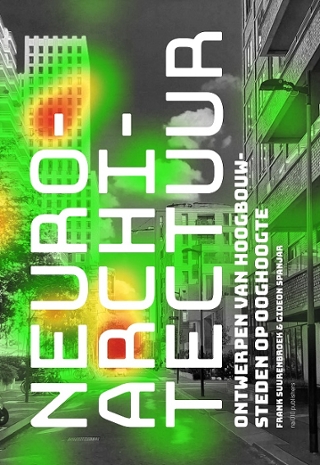
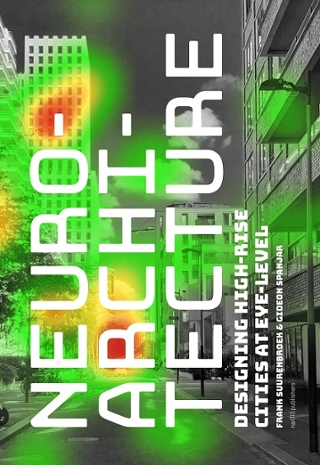

dr. F. Suurenbroek
Go to detailpage
